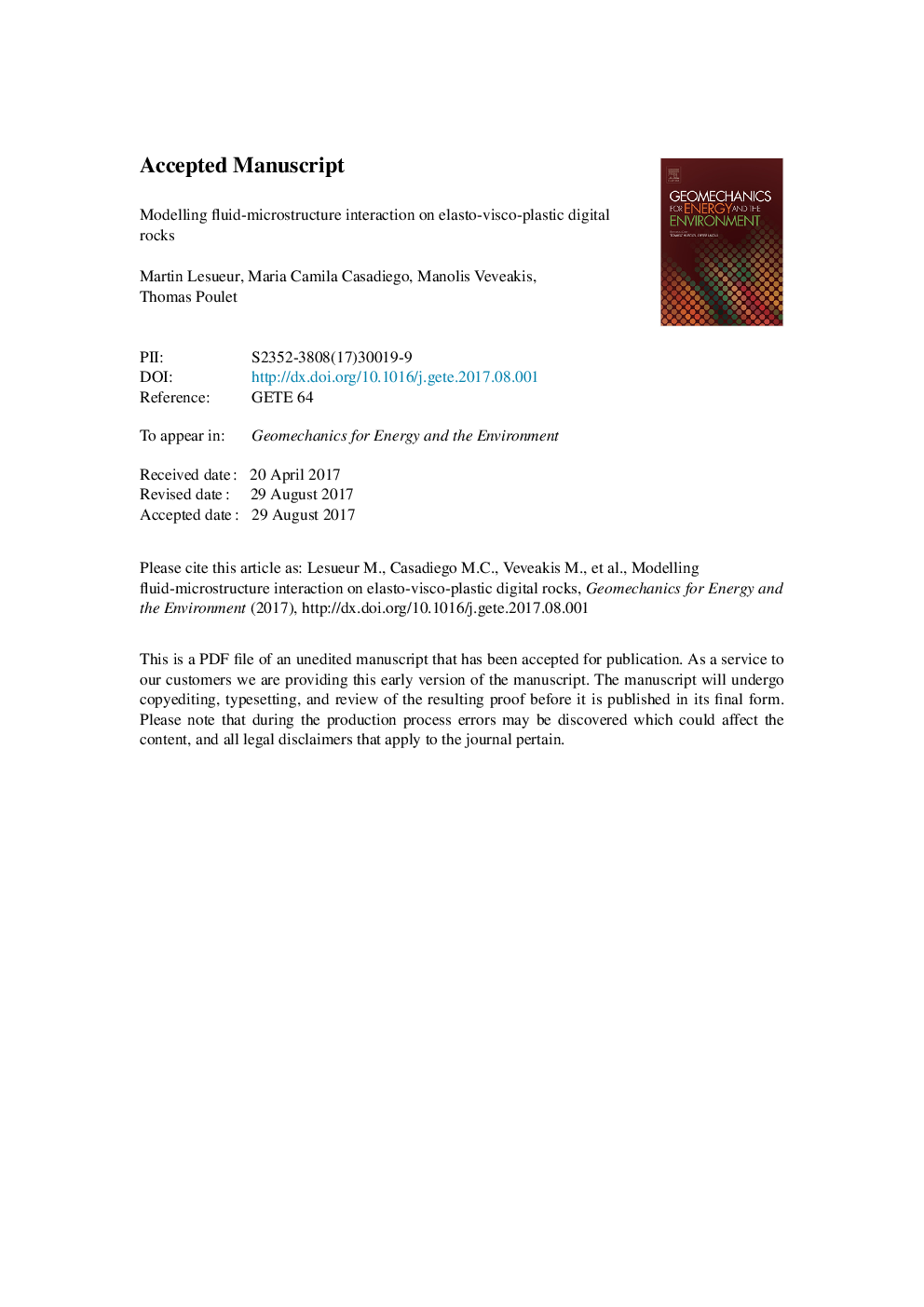| Article ID | Journal | Published Year | Pages | File Type |
|---|---|---|---|---|
| 4921500 | Geomechanics for Energy and the Environment | 2017 | 36 Pages |
Abstract
Flow simulators have become increasingly popular to compute permeability on digital porous rocks reconstructed from Computerised Tomography (CT) scan data as part of Digital Rock Physics workflows. Various schemes are being used that focus mainly on numerical efficiency but do not necessarily provide the flexibility to account for more complex couplings between other physical models than the flow itself, like irreversible mechanical deformation for instance. To overcome this limitation, we present a finite element implementation of an Eulerian flow solver that is coupled to a Lagrangian solid mechanics solver, both in a sequential or tight manner. The flow simulator is successfully benchmarked for permeability computation on a digital rock that has been previously used for other code validations. The need for a tightly coupled hydro-mechanical simulator is then highlighted by comparing the loose and tight coupling approaches, revealing that the tight approach is more accurate and more efficient computationally. Finally, the use of the simulator in real cases is illustrated by running a hydro-mechanical simulation on a digital rock sample, where plastic deformation and fluid flow in the porous space are resolved simultaneously.
Related Topics
Physical Sciences and Engineering
Earth and Planetary Sciences
Geotechnical Engineering and Engineering Geology
Authors
Martin Lesueur, Maria Camila Casadiego, Manolis Veveakis, Thomas Poulet,
